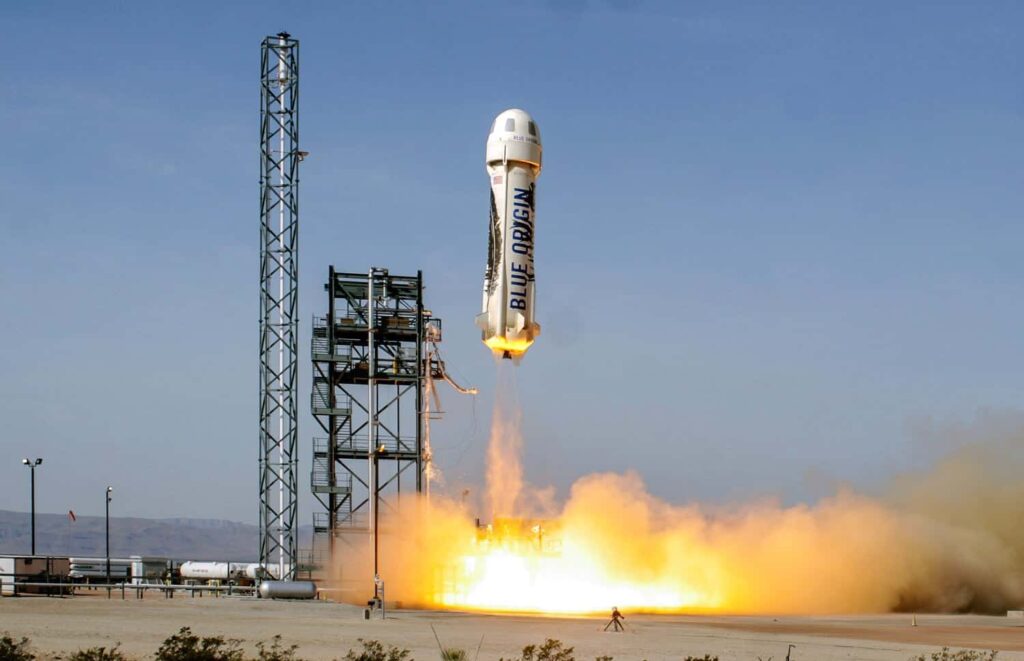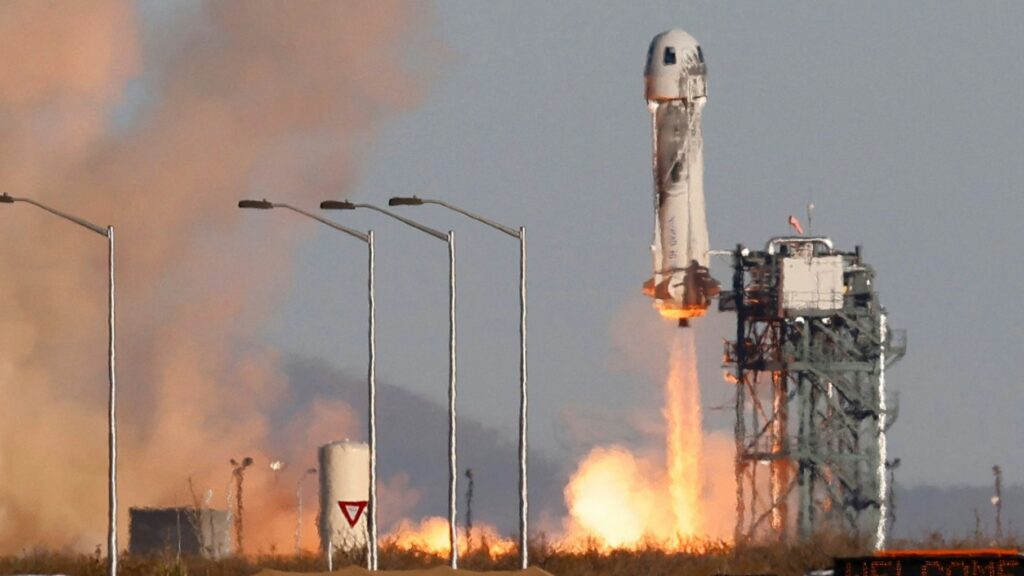It’s truly remarkable to witness the recent developments in the space industry. Shortly after Blue Origin completed its first fully successful mission, the company announced a new round of upgrades for its flagship rocket, New Glenn. This move appears to be a direct response to the rapid advancements of SpaceX’s rockets, especially the ever-evolving Starship. Yet, despite these ambitious upgrades, the central challenge remains clear: SpaceX continues to extend its lead with the Falcon 9 and Starlink programs.
In this detailed blog post, we’ll dive into the latest New Glenn upgrades, examine how Blue Origin is attempting to compete with SpaceX, and explore the implications for the future of orbital launches.
Blue Origin Finds Momentum After 25 Years of Preparation
After 25 years of careful planning, Blue Origin seems to have finally gained meaningful momentum in 2025. While the company has only completed two flights this year—a figure that might seem disappointing—the success of the second mission has restored confidence within the team.

Almost immediately following this milestone, Blue Origin revealed bold plans for the New Glenn orbital rocket, including a Superheavy-class version. This new configuration is being referred to as New Glenn 9×4, also known as New Glenn Block 2 or New Glenn V2, which significantly increases the rocket’s engine count and payload capacity.
What’s New with the New Glenn 9×4?
The New Glenn 9×4 represents a major evolution in Blue Origin’s orbital capabilities. Here’s a detailed breakdown of the upgrades:
Engine Configuration and Thrust Increases
- Booster: Moves from 7 engines to 9 engines
- Second stage: Increases from 2 engines to 4 engines
This new setup mirrors SpaceX’s Falcon booster, with liftoff thrust rising from 1,750 tons to 2,250 tons for the booster. The second stage will also see a dramatic increase from 155 tons to 310 tons, based on current engine thrust levels. With potential engine upgrades, these numbers could climb further to 2,610 tons for the booster and 384 tons for the second stage.
The New Glenn 9×4 is designed for missions that require extra capacity and performance, offering customers more launch options for mega constellations, lunar exploration, deep space missions, and national security tasks such as Golden Dome.
Payload and Capability Enhancements
The New Glenn 9×4 can carry:
- More than 70 tons to low Earth orbit (LEO)
- 14 tons to geosynchronous orbit (GEO)
- 20 tons to trans-lunar injection (TLI)
These improvements make the 9×4 version far more capable than the current 45-ton LEO capacity of New Glenn.
Design Changes and Rocket Dimensions
The upgrades extend beyond engines:
- Fairing diameter: Expanded to 8.5 meters (from 7 meters)
- Rocket height: Estimated at 120 meters, including a 23–24 m fairing extension
- Booster width: Slightly wider to house additional engines
These structural changes aim to support heavier payloads, including future lunar missions. While no production timeline has been announced, industry observers anticipate the 9×4 debut in late 2026 or early 2027.

Immediate Upgrades: New Glenn V1.5
Before the 9×4 version arrives, Blue Origin is enhancing the current model—starting with NG3. These upgrades, sometimes referred to as New Glenn Block 1.5 or V1.5, focus on:
- Propulsion
- Structures
- Avionics
- Reusability
- Recovery operations
Engine Performance Boost
- Booster: Combined thrust increases from 3.9 million pounds (1,755 tons) to 4.5 million pounds (2,320 tons)
- Upper stage: Total thrust rises from 145 tons to 181 tons
This performance improvement is achieved through propellant subcooling, pushing each BE4 engine beyond 250 tons of thrust. Testing has already shown 625,000 lbs of thrust, and projections indicate it may reach 640,000 lbs later this year—even surpassing SpaceX’s Raptor 3 engine.
Upcoming Enhancements
Additional improvements for NG3 include:
- Reusable fairing for higher launch rates
- Redesigned lower-cost tank structures
- More efficient reusable thermal protection system
These upgrades directly benefit customers, particularly for missions to LEO, the moon, and beyond.
Blue Origin’s Lunar Ambitions
The NG3 mission will test technologies for future lunar payloads, including the Blue Moon Mark I lander, laying the groundwork for heavier payloads like Blue Moon Mark II.
Interestingly, Blue Origin plans to reuse the NG2 booster for NG3, reflecting the company’s ongoing commitment to booster reusability and cost efficiency.

Challenges Ahead for Blue Origin
Despite the impressive upgrades, Blue Origin faces several technical hurdles before it can truly challenge SpaceX’s Starship:
Fuel and Efficiency Concerns
While engine thrust is increasing, fuel tank design hasn’t changed significantly. This may impact how efficiently propellant is used, potentially limiting performance gains.
Structural Imbalances
For the 9×4 version:
- The second stage and fairing nearly double in size while the booster increases only slightly
- Engine layout for the second stage may face interference issues
Reusability Limitations
- The New Glenn second stage remains expendable
- Only the fairing shows improved reusability
- Booster recovery relies on drone ship landings, unlike Starship’s direct landing system
In short, while New Glenn is more capable than previous versions, it still lags behind SpaceX in full reusability, launch cadence, and operational efficiency.
SpaceX Milestones and Competition
While Blue Origin works on upgrades, SpaceX continues to dominate orbital launches.
Falcon 9 and Starlink Achievements
On November 20th, a Falcon 9 launched 29 Starlink satellites from Florida. This flight marked SpaceX’s 100th Starlink mission in 2025, placing 2,500–3,000 satellites into orbit this year alone.
Currently, SpaceX has launched over 10,000 satellites, with 9,000+ active, maintaining Starlink’s dominance in satellite internet services despite emerging competitors like Kyper and Amazon’s Kuiper.
Launch Cadence
With 149 launches completed in 2025, SpaceX aims for 170 total by year-end, a target made feasible after the FAA lifted recent launch restrictions.
These milestones underscore how Falcon 9 remains far ahead of New Glenn, both in capability and operational tempo.

Will Blue Origin Surpass SpaceX?
The question on everyone’s mind is: Can Blue Origin’s New Glenn compete with Starship?
- Short-term upgrades (V1.5 / 7×2): Boost thrust but maintain current fuel capacity, limiting efficiency
- Long-term Superheavy version (9×4): Dramatically increases payload but faces structural and reusability challenges
- Starship advantage: Full reusability, higher launch cadence, and more optimized fuel usage
While the New Glenn 9×4 is a major step forward, overtaking SpaceX remains a steep climb. In terms of launch cadence, cost efficiency, and full reusability, Blue Origin still has years of development ahead.
Final Thoughts
Blue Origin’s New Glenn upgrades reflect a renewed confidence in 2025 and a clear vision for future lunar and deep space missions. From engine performance improvements to the Superheavy 9×4 variant, the company is positioning itself as a serious contender in the space race.
However, when compared to SpaceX, the path is still uphill. Starship continues to push boundaries with fully reusable architecture, unmatched launch cadence, and massive payload capacity.
For now, New Glenn can be best compared to SpaceX’s Falcon family, with impressive payload gains but needing time to match operational efficiency and reusability.
FAQs
1. What is the New Glenn 9×4 rocket?
The New Glenn 9×4 is Blue Origin’s upgraded Superheavy-class orbital rocket, featuring 9 engines on the first stage and 4 engines on the second stage. It is designed for high-capacity missions to LEO, GEO, and beyond.
2. How is New Glenn 9×4 different from the original New Glenn?
Compared to the original, the 9×4 version has increased engine count, higher thrust, larger fairing diameter, and extended rocket height, making it capable of carrying over 70 tons to low Earth orbit.
3. What are the payload capabilities of New Glenn 9×4?
- Low Earth Orbit (LEO): 70+ tons
- Geosynchronous Orbit (GEO): 14 tons
- Trans-Lunar Injection (TLI): 20 tons
4. When will the New Glenn 9×4 launch?
Blue Origin has not officially announced a launch date, but industry analysts predict the first flight could occur in late 2026 or early 2027.
5. What is New Glenn V1.5?
New Glenn V1.5 (or Block 1.5) is an upgrade to the current New Glenn 7×2 version, featuring improved engine thrust, reusable fairing, and better avionics for upcoming missions like Blue Moon Mark I.
6. How does New Glenn compare to SpaceX’s Starship?
While the New Glenn 9×4 offers significant payload improvements, Starship currently surpasses it in full reusability, launch cadence, and operational efficiency.
7. What are the new design features of New Glenn 9×4?
Key design changes include:
- 8.5-meter fairing diameter
- 120-meter total rocket height
- Wider booster to accommodate more engines
- Extended second stage for extra propellant
8. Is New Glenn fully reusable?
No, the first stage booster is reusable, but the second stage remains expendable. Only the fairing shows improved reusability.
9. How does New Glenn 9×4 compare to Falcon 9?
New Glenn 9×4 has higher payload capacity than Falcon 9 but currently lags in launch cadence and booster reuse, making it more comparable to Falcon Heavy in terms of performance.
10. What are Blue Origin’s plans for lunar missions?
Blue Origin plans to use New Glenn to launch the Blue Moon Mark I and II landers, eventually supporting heavier payloads and deep-space missions.
11. How has Blue Origin increased engine performance?
Through propellant subcooling, the BE4 engines now produce up to 640,000 lbs of thrust, surpassing SpaceX’s Raptor 3 engine in sea-level performance.
12. How tall is the New Glenn 9×4?
The total height of New Glenn 9×4 is estimated at 120 meters, including an extended fairing of about 23–24 meters.
13. What missions will New Glenn 9×4 support?
It will support mega constellations, lunar and deep space exploration, and national security missions like Golden Dome.
14. How many flights has Blue Origin completed in 2025?
Blue Origin has completed two flights in 2025, with the second mission boosting team confidence and leading to immediate upgrade announcements.
15. What are the key challenges for New Glenn 9×4?
Challenges include structural imbalance, second-stage engine layout concerns, limited reusability, and propellant efficiency issues.
16. Will New Glenn surpass SpaceX in the near future?
Currently, New Glenn faces a steep climb to surpass SpaceX’s rockets, especially Starship, due to differences in full reusability, launch cadence, and operational efficiency.
Read More:
- Tesla Model Y Standard: first impressions from a Premium owner
- Elon Musk Announces All-New Solid State Battery For Tesla 2026
- NVIDIA Just Killed the iPhone – Meet the First AI NeoPhone
- SpaceX just announced Major Plan Changes on Starship Flight 12 after B18 exploded
- Elon Musk proposes Grok 5 vs world’s best League of Legends team match


1 thought on “Blue Origin just Dropped “Super Heavy” New Glenn Update after success to Beat SpaceX Starship, but”